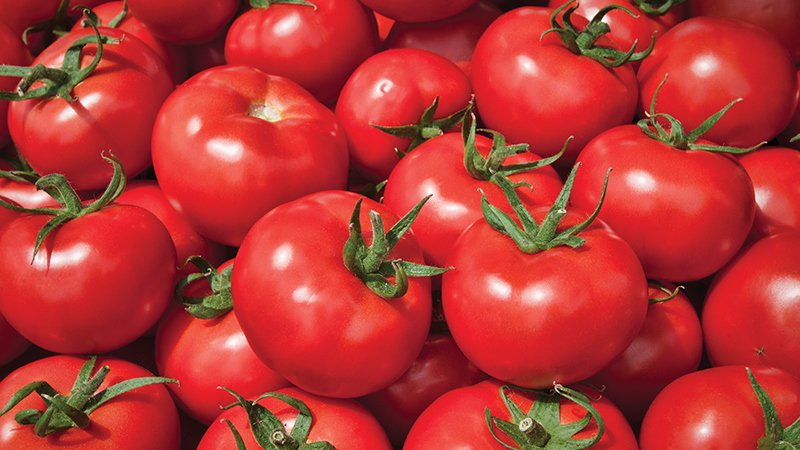An All-Encompassing Look At Grape Pests
 With the seemingly endless parade of new grape pests, growers and pest control advisers should be interested in the book Grape Pest Management.
With the seemingly endless parade of new grape pests, growers and pest control advisers should be interested in the book Grape Pest Management.
The weighty tome, which hit bookshelves almost exactly one year ago, could be considered the Bible on the topic. The most recent edition was edited by Larry Bettiga, a viticulture farm advisor with University of California Cooperative Extension. He has 36 years of service to UC. Based in Monterey County for the past 30 years, he conducts applied research and education programs for the wine grape industries of Monterey, San Benito, and Santa Cruz Counties.
Bettiga’s research focuses on the influences of cultural practices, rootstocks, clonal selection, and canopy management on grapevine growth and productivity; and the use of integrated approaches to solve pest management problems in coastal wine grape production systems.
American and Western Fruit Grower recently caught up with Bettiga to discuss the book and his advice for growers on grape pest management.
This is the third edition of Grape Pest Management? When was it originally published?
The first edition was published in 1981. For the first time the book consolidated into one source our collective knowledge of the biology and management of the pests affecting California wine, raisin, and table grape vineyards.
Grape integrated pest management (IPM) in California has its roots in the late 1950s when University of California Agricultural Experiment Station entomologists and Cooperative Extension viticulturists, with the active support of the grape industry, began studies on how to integrate cultural, biological and chemical controls into practical management programs in response to the increasing pesticide resistance in western grape leafhopper (WGLH) populations and the accompanying biological upsets of spider mites and mealybugs.
Early research demonstrated the value of preserving natural enemy populations of the WGLH such as the Anagrus wasp, along with the development of monitoring methods and economic treatment thresholds.
Grape IPM is an approach that seeks to manage pest populations below an established economic injury level. Key components of this approach are correct identification of the pest, established monitoring techniques, and treatment thresholds that determine when control practices are appropriate.
IPM considers all control techniques that are appropriate for a given pest complex and combines biological control, mating disruption, habitat modification, cultural practices, pest-resistant rootstocks, and certified virus-tested plant material. Pesticides are applied only when monitoring indicates they are needed and are chosen to control the target pest while minimizing the risk to human health, beneficial and non-target organisms, and the environment.
The first two editions of this book were successfully produced with the dedicated leadership of Donald L. Flaherty, entomology farm advisor emeritus, as technical editor chairman.
Why did you think the book needed updating?
Pest management is constantly changing. To convey new information on introduced pest species, improved sampling and monitoring techniques, pesticide resistance issues, pest biology and epidemiology, and management practices, the book was revised and published as a second edition in 1992 and again as the third edition, which was published at the end of 2013.
For this third edition of Grape Pest Management, we have added several invasive species that have become major grape pests, including vine mealybug and glassy-winged sharpshooter, as well as recent introductions such as Virginia creeper leafhopper, light brown apple moth, and European grapevine moth. We also added pests such as brown marmorated stink bug and spotted wing drosophila that may become pests in California.
University of California research has significantly advanced our understanding of the bacterium Xylella fastidiosa, which causes Pierce’s disease, as well as the fungal organisms that cause canker diseases and esca (black measles). We have also updated the biology of grape powdery mildew and introduced a risk assessment index model that allows vineyard managers to choose and time control options based on local disease severity.
Vineyard floor management now includes the impact of cover cropping on pest populations, as well as shifts in weed populations due to control practices and herbicide resistance.
Despite the intimidating size —more than 600 pages — it seems to be written in a grower-friendly style. Was that your intention?
We have maintained the same format as the previous editions. For each pest there is a detailed description of the organism, the injury symptoms produced, seasonal pest development, and monitoring and management guidelines.
Among the most popular features are the color photographs that accompany each pest section; we have added over 250 additional photos to the revised edition. These photos are of great assistance in field identification of pest issues.
To include our improved knowledge from University of California research of existing pests and to add introduced species not listed in the previous editions we added 200 pages to the third edition.
What do you hope grower/readers take away from it?
Although more than 70 University of California research scientists and Cooperative Extension advisors and specialists contributed as authors for the current third edition, the foundation of this book is supported by the research and experiences of University of California personnel who have conducted the studies to develop and evaluate grape pest management solutions that date back to the 1950s and beyond. The book is a valuable resource to both experienced and new vineyard managers and pest management professionals.
Can you summarize what’s new that readers of earlier editions of Grape Pest Management will find in the third edition?
The new edition includes the results of updated sampling and monitoring techniques, pesticide resistance issues, and management practices. Also, it describes in detail major new grape pests, like the vine mealybug, glassy-winged sharpshooter, Virginia creeper leafhopper, light brown apple moth, and European grapevine moth, which are the most common new pests.
What has caused the increase of grape pests?
The global movement of people and products, and the potential for the movement of non-native plant and animal species, have high-risk consequences. When pest introductions are not detected and contained early, their establishment as pest species becomes more problematic.
Can you estimate annual losses related to grape pests in California?
Although annual losses are difficult to estimate, grape production in California had a farm gate value of $4.4 billion in 2012. As grape pests affect both the quantity and quality of grapes, our goal is to minimize economic losses through pest management practices. The information in Grape Pest Management can help growers implement best management practices.
If you could give grape growers one piece of advice regarding pest management, what would it be?
As site conditions, pest complexes, and economics can vary greatly for different grape growing regions, I must emphasize that this book is to be used as a guide for grape IPM. Growers and pest control advisers must still determine for themselves the procedures most applicable to their vineyard situations.
Although control options are discussed, specific pesticide recommendations are not given in this book because pesticide registrations and labels change frequently. For current control options, check with your local UCCE Farm Advisor or pest control adviser for the latest control recommendations. Or see the current UC IPM Pest Management Guidelines: Grapes on the Web at IPM.UCDavis.edu. ●









